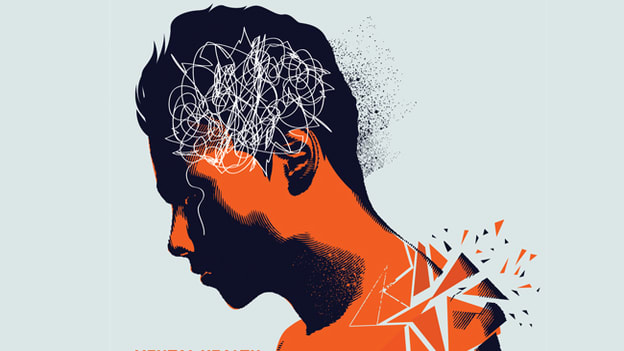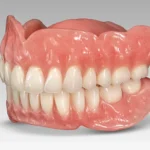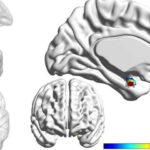Depression, clinically referred to as major depressive disorder (MDD), is a serious mental health condition that affects millions of individuals worldwide. It is characterized by persistent sadness, loss of interest in daily activities, and a range of emotional and physical symptoms that can significantly impact one’s quality of life. While occasional feelings of sadness are a natural part of life, depression is more than just temporary unhappiness—it is a medical condition that requires attention and treatment.

Symptoms of Depression
Depression manifests in various ways, with symptoms differing in severity and duration. The most common symptoms include:
- Persistent Sadness: A prolonged feeling of emptiness or hopelessness.
- Loss of Interest: A diminished ability to find joy in activities that were once enjoyable.
- Changes in Appetite: Significant weight loss or gain unrelated to dieting.
- Sleep Disturbances: Insomnia or excessive sleeping.
- Fatigue and Low Energy: A feeling of exhaustion and a lack of motivation.
- Feelings of Worthlessness or Guilt: Intense self-criticism or inappropriate guilt.
- Difficulty Concentrating: Inability to focus, make decisions, or retain information.
- Thoughts of Death or Suicide: Recurrent thoughts of self-harm or suicidal ideation.
For a diagnosis of major depressive disorder, these symptoms must persist for at least two weeks and significantly impact daily functioning.
Causes and Risk Factors
Depression is a complex condition with multiple contributing factors, including:
Biological Factors
- Imbalances in neurotransmitters like serotonin and dopamine.
- Hormonal changes that affect mood regulation.
Genetic Factors
- A family history of depression increases the likelihood of developing the condition.
Psychological and Personality Traits
- Low self-esteem, excessive self-criticism, and a pessimistic outlook on life.
Environmental and Social Factors
- Exposure to traumatic events, childhood abuse, neglect, or long-term stress.
- Social isolation, loneliness, or lack of emotional support.
Medical Conditions and Substance Use
- Chronic illnesses such as diabetes, heart disease, or cancer.
- Alcohol and drug misuse, which can exacerbate depressive symptoms.
Types of Depression
Depression is not a one-size-fits-all condition. Different types of depression exist, each with distinct characteristics:
- Major Depressive Disorder (MDD): A severe form of depression that interferes with daily life.
- Persistent Depressive Disorder (Dysthymia): A milder but chronic form of depression lasting two years or more.
- Bipolar Disorder: Alternating episodes of depression and mania.
- Seasonal Affective Disorder (SAD): Depression linked to seasonal changes, commonly in winter.
- Postpartum Depression: Depression that occurs after childbirth.
- Atypical Depression: A subtype characterized by mood reactivity and increased appetite or sleep.
Diagnosis of Depression
Diagnosing depression involves a thorough evaluation by a healthcare professional, which includes:
- Clinical Interviews: Assessing mood, behavior, and personal history.
- Physical Examinations: To rule out medical conditions that could mimic depression.
- Psychological Assessments: Using standardized questionnaires and diagnostic tools.
A proper diagnosis is crucial for determining the best course of treatment.
Treatment Options for Depression
Effective treatment for depression typically involves a combination of therapies tailored to the individual’s needs.
Psychotherapy
- Cognitive-Behavioral Therapy (CBT): Helps individuals change negative thought patterns.
- Interpersonal Therapy (IPT): Focuses on improving relationships and social functioning.
- Psychodynamic Therapy: Explores unconscious thoughts and past experiences.
Medication
- Selective Serotonin Reuptake Inhibitors (SSRIs): The most commonly prescribed antidepressants.
- Serotonin-Norepinephrine Reuptake Inhibitors (SNRIs): Another effective class of medications.
- Tricyclic Antidepressants (TCAs) and Monoamine Oxidase Inhibitors (MAOIs): Used in treatment-resistant cases.
Lifestyle Changes and Self-Care
- Regular physical exercise to boost endorphins and improve mood.
- Maintaining a balanced diet rich in essential nutrients.
- Prioritizing sleep and establishing a healthy sleep routine.
- Engaging in hobbies and social activities.
Alternative and Complementary Therapies
- Mindfulness meditation and yoga to reduce stress.
- Acupuncture and herbal supplements (under medical supervision).
- Light therapy for seasonal affective disorder.
Prevention and Long-Term Management
Although depression cannot always be prevented, certain strategies can help reduce the risk:
- Building Strong Social Connections: Maintaining supportive relationships.
- Practicing Stress Management Techniques: Meditation, deep breathing, and relaxation exercises.
- Regular Medical Check-Ups: Monitoring mental and physical health.
- Early Intervention: Seeking help at the first signs of depressive symptoms.
Long-term management often involves ongoing therapy, lifestyle modifications, and adherence to prescribed treatments to prevent relapse.
Understanding the Impact of Depression
Depression affects not only individuals but also their families, workplaces, and communities. Its consequences can include:
- Reduced work productivity and increased absenteeism.
- Strained personal relationships and social withdrawal.
- Higher risk of developing additional health problems.

